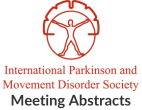Cortical role in the freezing of gait in Parkinson’s disease
Objective: In this study, we aimed to investigate the neural underpinning of freezing of gait (FOG) in Parkinson's disease (PD), especially the role of the…Olfactory performance and resting state functional connectivity in non-demented drug naïve patients with Parkinson’s disease
Objective: We investigated the pattern of resting state functional connectivity in patients with PD according to olfactory performance to elucidate olfactory-dependent cortical-subcortical functional networks. Background:…Altered connectivity within the cerebello-thalamo-cortical network in essential tremor: A resting state fMRI study
Objective: To evaluate the tremor network in Essential Tremor(ET) patients in rest conditions with respect to Healthy Controls(HC). Background: Pathophysiology of ET is poorly understood.…The effect of an eight-week mindfulness training intervention on emotion related brain activation in people with Parkinson’s disease
Objective: The aim of the current study is to investigate the effect of an eight-week mindfulness training intervention on emotion related brain activation in people…Combined imaging markers increase accuracy when predicting real life disease onset in Huntington’s disease
Objective: To identify a robust imaging marker that is capable of predicting real life disease onset in Huntington's disease (HD). Background: Huntington's disease (HD) is…Functional connectome organization is altered in PD patients with mild cognitive impairment
Objective: The aim of the study was to investigate the functional brain connectome organization in patients with Parkinson's disease (PD) with mild cognitive impairment (MCI).…Clinical and neuroimaging correlations in early manifest Huntington’s disease patients: Default mode network properties according to resting-state functional MRI
Objective: (1) To compare pattern of spontaneous activity within default mode network (DMN) between early manifest Huntington's disease (HD) patients and healthy controls and (2)…Onset-related subtypes of Parkinson’s disease differ in the patterns of striatal functional connectivity: A resting-state functional MRI study
Objective: No. Background: Parkinson's disease is a surprising heterogeneous neurodegenerative disorder. Early onset Parkinson's disease (EOPD) and late onset Parkinson's disease (LOPD) were reported to…Deficits in sensorimotor networks in functional movement disorders: A graph-theory based network analysis
Objective: To investigate the organization of functional neural networks in patients with functional (psychogenic) movement disorders (FMD). Background: Although several task-based neuroimaging studies have pointed…Response inhibition in Parkinson’s disease
Objective: To study the brain networks underlying Response Inhibition in Parkinson's disease (PD). Background: While some PD patients can have significant executive dysfunction, others remain…
